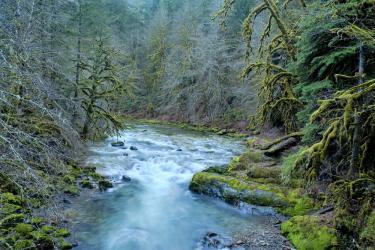Allocating My Basis
As a woodland owner, you already know that your trees hold a great deal of value. Because that value can come into play at tax time, it’s important to understand how it factors into your basis.
In tax terms, it’s often beneficial to separate out what you paid for your land from what you paid for the timber that grows on it. That may seem like a tall order – after all, you paid a single price for your land and everything on it. But splitting or allocating your basis in this way can reduce your tax burden when you harvest trees on your land, and there is a procedure for doing so.
The first step is deciding how you want to classify what’s on your property. A common approach is to divide it into pre-merchantable timber (trees with no financial value), merchantable timber (trees that do have financial value), and the land. Then you must allocate part of the basis to each of these elements of your property.
Start by finding the fair market value of your assets. Let’s say you purchase land and timber for a total price of $100,000, plus $5,000 in legal expenses associated with the purchase. Your total basis in the property is $105,000.
Now you hire a forest-savvy appraiser, who determines that the fair market value of your property is $125,000. He or she tells you the breakdown of that value is:
| Asset Description | Fair Market Value |
| Land | $65,000 |
| Merchantable Timber | $50,000 |
| Pre-merchantable Timber | $10,000 |
| Total | $125,000 |
Next, you calculate percentages. Each element of the property—the land itself, the merchantable timber, and the pre-merchantable timber—contributes a fraction of the total fair market value. By dividing that contribution by the total fair market value, you can determine the percentage.
For example, the land contributes $65,000 to the total fair market value of $125,000. That means it contributes $65,000/$125,000 = 0.52, or 52 percent.
The last step is to forget all about your fair market value, and apply that percentage to your total basis. In this example, we would take 0.52 and multiply it by the basis, $105,000. That means your allocated basis for the land is $105,000 x 0.52 = $54,600.
For all your assets, the allocated basis would break down as follows:
| Asset Description | Fair Market Value | Percent of the Total Market Value | Allocated Basis |
| Land | $65,000 | 52% | $54,600 |
| Merchantable Timber | $50,000 | 40% | $42,000 |
| Pre-merchantable Timber | $10,000 | 8% | $8,400 |
| Total | $125,000 | 100% | $105,000 |
There are other methods for allocating your basis among your land and timber, and you can consult with an accountant or tax professional to discuss which method might be the best one for you.
The most important thing about allocating the basis is being able to defend what you’ve done. It is to your advantage as a landowner to put most of the basis on timber, because the timber will likely be harvested—and the basis used to offset the gains from the harvest—long before the land is sold. But if you can’t show that the amount allocated to your timber is reasonable, you may be in trouble if you’re audited. Consult with a forester if you’re not sure about the value of what you have, and what kind of basis it should be allocated. And make sure to keep that information in your files, just in case the IRS comes calling.
Now, what if you never allocated basis for your property? Don’t worry—there’s a way to deal with that too.
How can I get more tips?
It’s simple! Enter your email below.

